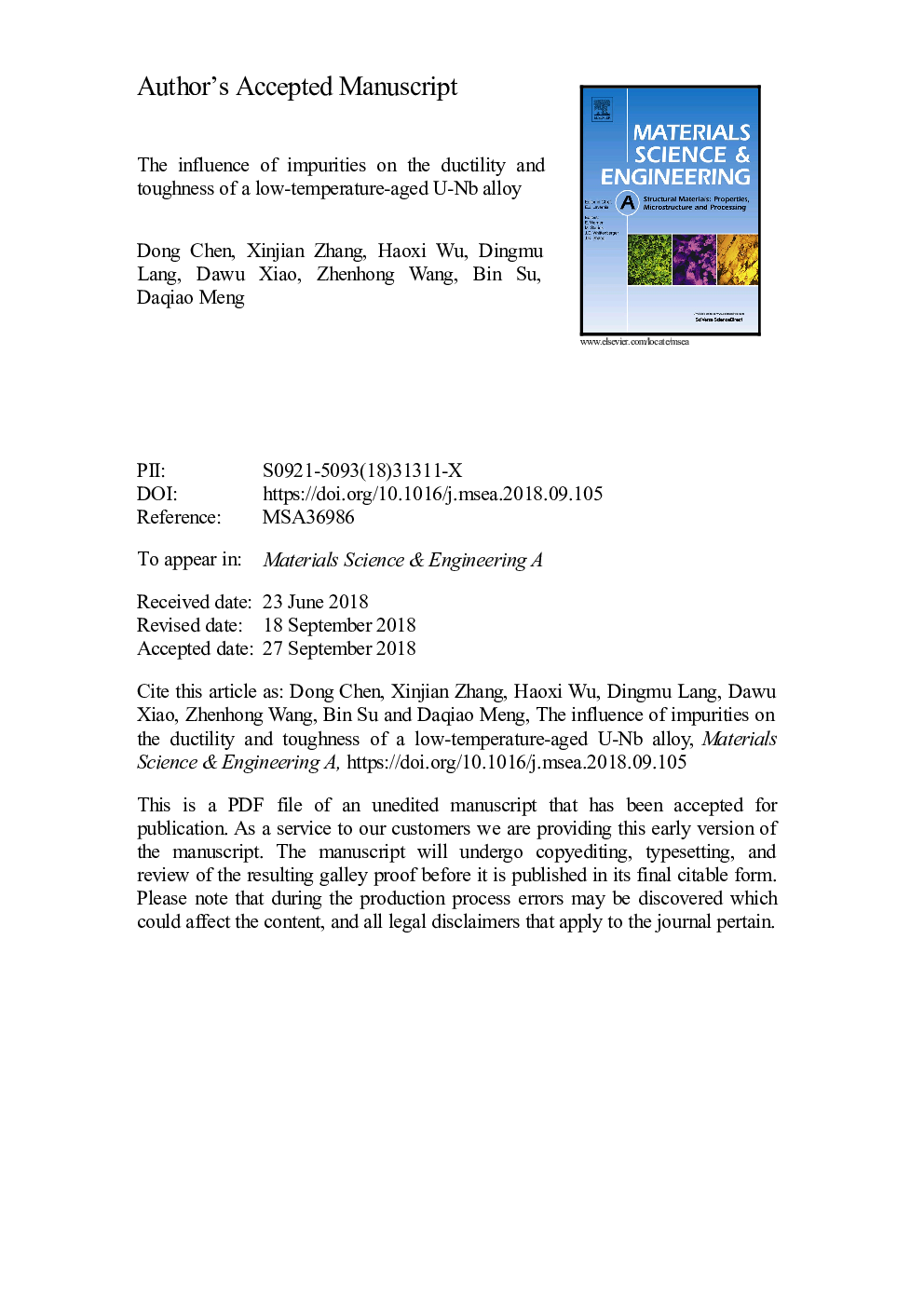| Article ID | Journal | Published Year | Pages | File Type |
|---|---|---|---|---|
| 12055107 | Materials Science and Engineering: A | 2019 | 39 Pages |
Abstract
The effect of impurity level and inclusions on the mechanical properties, especially the ductility and toughness, of two low-temperature-aged U-5.5Nb alloys were extensively investigated. Two U-5.5Nb alloys with different impurity levels, i.e., total C+N contents of 330 and 840 mass ppm, are discussed here. The methods used in the present study were scanning electron microscopy with energy-dispersive X-ray spectroscopy, optical microscopy, time-of-flight secondary ion mass spectrometry, tensile and impact mechanical property tests, and nanoindentation measurement. According to the results, both the low- and high-impurity-level samples contain two types of inclusions, namely, U(N,C) and Nb2C inclusions. The inclusion volume fraction, average inclusion radius, inclusion spacing, and number of inclusion particles per unit area all increase with increasing impurity level. In addition, the ductility, i.e., elongation, reduction in area, and impact toughness decrease with increasing impurity level. However, the impurity level has little effect on the yield strength. The inclusions have a detrimental effect on the ductility and toughness of the alloys because the inclusions are the preferential sites for void nucleation. Based on the experimental observations, an illustration of the failure mechanisms for the tensile and impact fracture behaviors for the low-temperature-aged U-5.5Nb alloy is presented.
Related Topics
Physical Sciences and Engineering
Materials Science
Materials Science (General)
Authors
Dong Chen, Xinjian Zhang, Haoxi Wu, Dingmu Lang, Dawu Xiao, Zhenhong Wang, Bin Su, Daqiao Meng,
